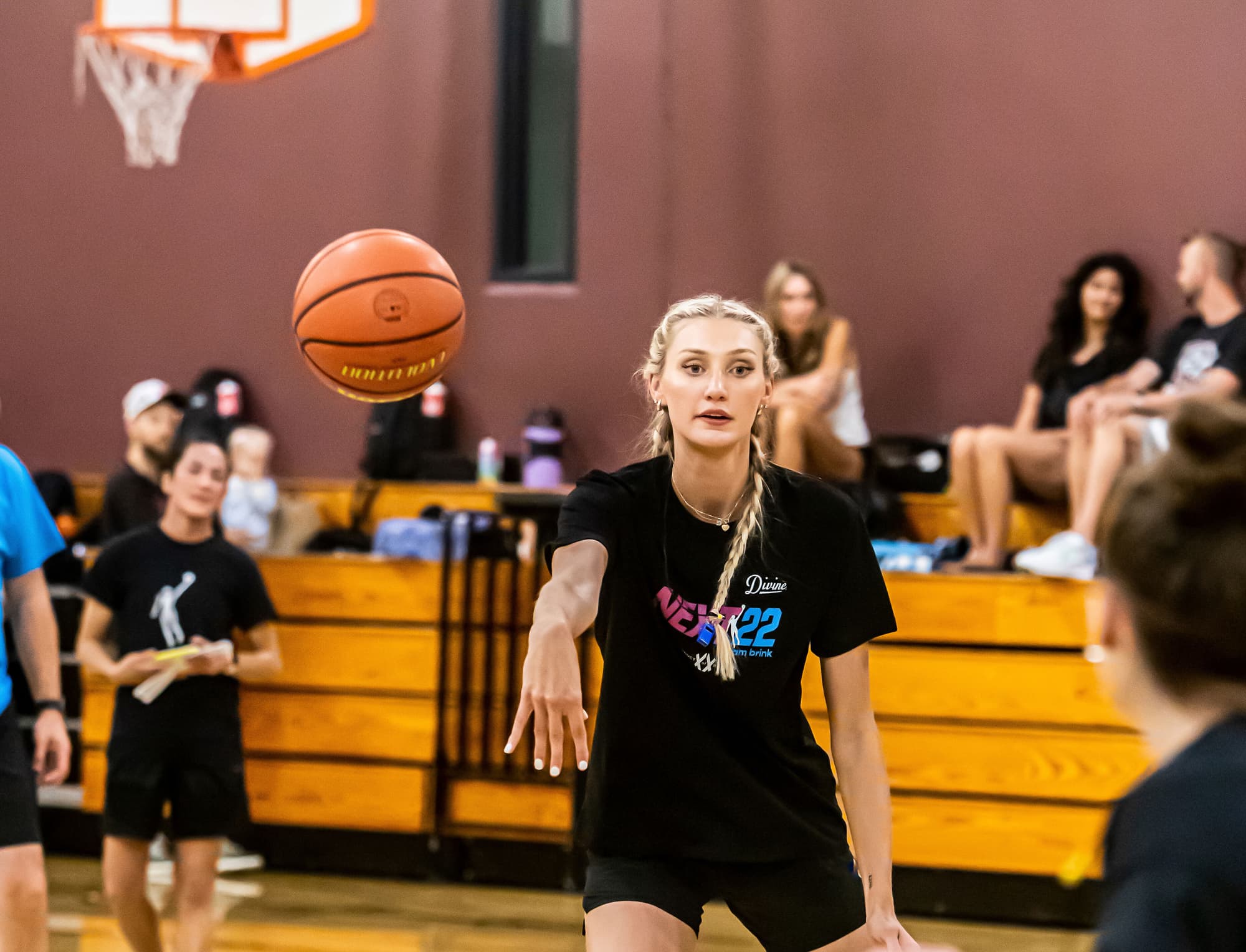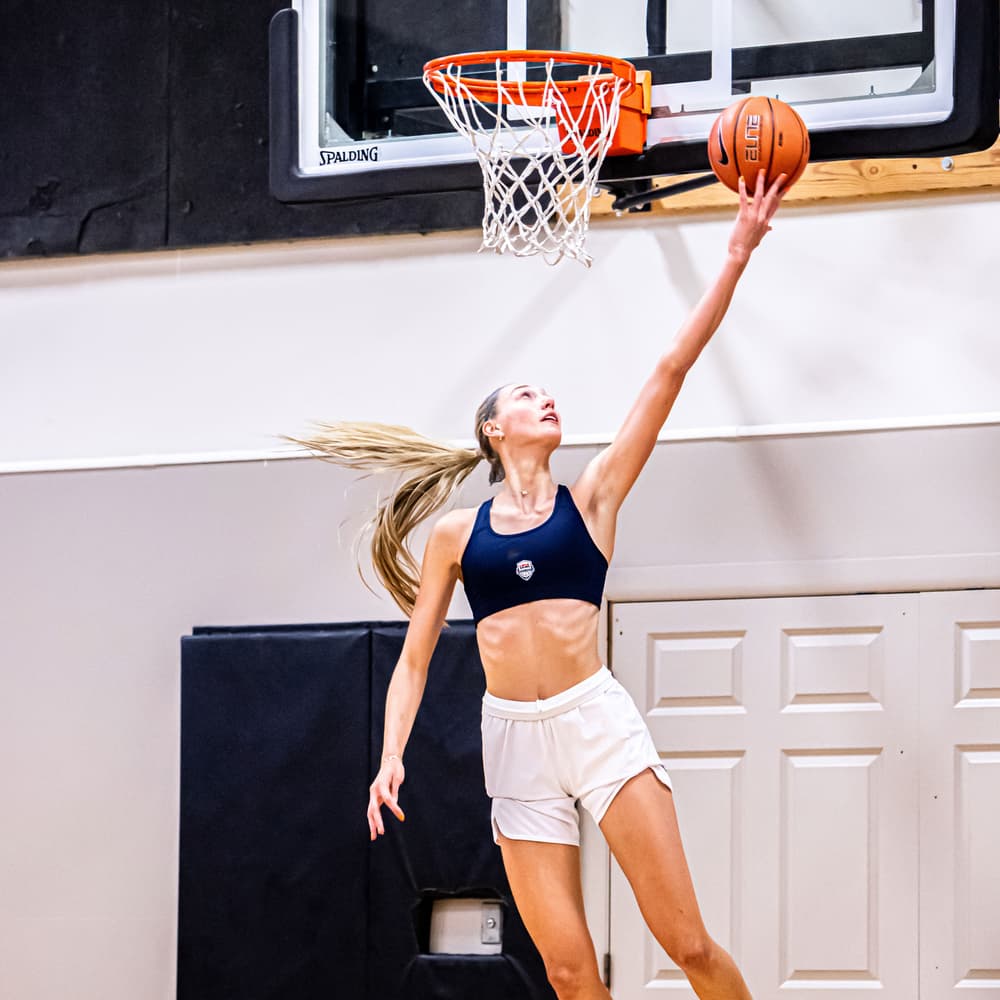Cameron Brink achieves visual freedom with the EVO implantable lenses
Basketball Player
Basketball Player

Vision struggles on and off the court
Cameron Brink, a star on the women’s basketball team of Stanford University, faced the daily struggles of glasses and contacts, impacting both her personal and professional life.

EVO ICL: the game-changer
Join her in experiencing the world with newfound clarity and confidence. For those on the fence about EVO ICL, Cameron passionately encourages,
"Talk to your eye doctor today. It's truly a life-changing procedure!"
Ready to embrace a life without the hassle of glasses and contacts? Discover the possibilities with EVO ICL. Call an EVO advisor today to schedule an appointment with an eye doctor near you, and embark on your own journey towards visual freedom!
Belangrijke veiligheidsinformatie
De ICL is ontworpen om bijziendheid te corrigeren/verminderen bij patiënten van 21 tot 60 jaar oud tussen -0,5 D tot -20,0 D met of zonder astigmatisme tot 6,0 D en om verziendheid te corrigeren/verminderen bij patiënten van 21 tot 45 jaar oud met verziendheid tussen + 0,5 D en +16,0 D met of zonder astigmatisme tot een maximum van 6,0 D. Uw bijziendheid, verziendheid en astigmatisme moeten minimaal een jaar lang onveranderd zijn voordat u een oogoperatie ondergaat, zodat uw chirurg ervoor kan zorgen dat de voor u meest geschikte ICL wordt gebruikt. Uw zicht kan door een ICL-ingreep verbeteren zodat u geen bril of lenzen nodig heeft. De ICL-ingreep kan niet voorkomen dat u een leesbril nodig heeft, zelfs als u nooit eerder een leesbril heeft gebruikt. De ICL is een alternatief voor andere refractieve ingrepen, waaronder een laserbehandeling (LASIK, laser-assisted in situ keratomileusis), fotorefractieve keratectomie (PRK), chirurgische incisies of andere manieren om uw zicht te corrigeren, zoals met contactlenzen of een bril. Het implanteren van een ICL is een chirurgische procedure en brengt daarom potentieel ernstige risico's met zich mee. Gemelde potentiële complicaties/bijwerkingen die verband houden met algemene refractieve chirurgie: aanvullende ingrepen, cataractvorming, verlies van het best gecorrigeerde zicht, verhoogde druk in het oog, verlies van cellen van het binnenste oppervlak van het hoornvlies, conjunctivale irritatie, acute zwelling van het hoornvlies, aanhoudende zwelling van het hoornvlies, endoftalmitis (infectie van het volledige oog), lichtschitteringen en/of lichtkringen, hyfemie (bloed in het oog), hypopyon (pus in het oog), ooginfectie, dislocatie van de ICL, macula-oedeem, niet reagerende pupil, glaucoom door pupillaire blokkade, ernstige ontsteking van het oog, iritis, uveïtis, verlies van glasachtig lichaam en hoornvliestransplantatie. Voordat u een ICL-ingreep overweegt, moet u een volledig oogonderzoek laten uitvoeren en de ICL-ingreep met uw oogarts bespreken, met name de mogelijke voordelen, risico's en complicaties. Ook moet u bespreken hoe veel tijd er nodig is voor herstel na de operatie.
Selecteer uw regio
Latin America
Referenties
1Patient Survey, STAAR Surgical ICL Data Registry, 2018
2Sanders D. Vukich JA. Comparison of implantable collamer lens (ICL) and laser-assisted in situ keratomileusis (LASIK) for Low Myopia. Cornea. 2006 Dec; 25(10):1139-46.
3Naves, J.S. Carracedo, G. Cacho-Babillo, I. Diadenosine Nucleotid Measurements as Dry-Eye Score in Patients After LASIK and ICL Surgery. Gepresenteerd tijdens de American Society of Cataract and Refractive Surgery (ASCRS) 2012.
4Shoja, MR. Besharati, MR. Dry eye after LASIK for myopia: Incidence and risk factors. European Journal of Ophthalmology. 2007; 17(1): pp. 1-6.
5aLee, Jae Bum et al. Comparison of tear secretion and tear film instability after photorefractive keratectomy and laser in situ keratomileusis. Journal of Cataract & Refractive Surgery , Volume 26, Issue 9 , 1326 - 1331.
5bParkhurst, G. Psolka, M. Kezirian, G. Phakic intraocular lens implantation in United States military warfighters: A retrospective analysis of early clinical outcomes of the EVO Visian ICL. J Refract Surg. 2011;27(7):473-481.



